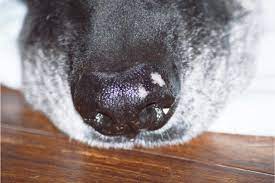Dog Food for Dogs with No Teeth


Losing teeth is a common occurrence in dogs, and it can significantly impact their ability to chew and eat properly. If your furry friend has lost their teeth or is experiencing dental issues that make chewing difficult, providing the right type of food becomes crucial. In this article, we will explore the challenges faced by dogs with no teeth, discuss suitable food options, highlight essential nutrients, and provide tips for caring for dogs in this situation.
Why Do Dogs Lose Their Teeth?
Dogs can lose their teeth due to various reasons, including age, dental diseases, injuries, or genetic factors. As they get older, dogs may experience tooth decay, gum disease, or tooth loss. Poor oral hygiene and inadequate dental care can exacerbate these issues, leading to discomfort and tooth loss.
Common Dental Problems in Dogs
Dental problems in dogs are prevalent, and they can range from mild to severe. Some common dental issues include periodontal disease, tooth decay, cracked teeth, abscesses, and oral infections. These conditions not only cause pain but can also make it challenging for dogs to eat their regular food.
Understanding the Challenges of Feeding Dogs with No Teeth
When dogs have no teeth or have dental problems that hinder their ability to chew, it’s essential to modify their diet accordingly. Regular dry kibble may be too difficult to consume, leading to frustration, weight loss, and malnutrition. Therefore, providing soft, easily chewable food becomes necessary to ensure their nutritional needs are met.
Selecting the Right Dog Food for Dogs with No Teeth
Choosing the right dog food for dogs with no teeth requires careful consideration. Several options cater specifically to dogs with dental issues. Let’s explore some suitable choices:
Soft and Moist Dog Food Options
Soft and moist dog food is an excellent choice for dogs with no teeth. These products are specially formulated to be easy to chew and digest. They come in various flavors and textures, making them appealing to picky eaters as well. Look for reputable brands that prioritize high-quality ingredients and meet the nutritional requirements for your dog’s age and size.
Semi-Moist Dog Food Options
Semi-moist dog food is another viable option for dogs with dental problems. It has a soft and chewable texture, making it easier for dogs to consume. However, it’s crucial to read the ingredient labels and avoid products that contain excessive artificial preservatives, colors, and fillers. Opt for options with natural ingredients and a balanced nutrient profile.
See also: Which Puppy Teeth Will Fall Out and When: A Complete Guide
Wet Canned Dog Food Options
Wet canned dog food is a popular choice for dogs with no teeth. These products typically have a high moisture content, making them softer and easier to eat. Additionally, they come in a wide variety of flavors, allowing you to find options that your dog will enjoy. Ensure that the canned food provides complete and balanced nutrition, as some may be formulated as treats rather than main meals.
Homemade Soft Food Recipes
If you prefer a more personalized approach, you can prepare homemade soft food for your dog. It’s essential to consult with a veterinarian or a veterinary nutritionist to ensure your homemade meals meet your dog’s nutritional needs. A combination of cooked meats, vegetables, and grains can create a soft and nutritious meal. However, be cautious of ingredients that may be harmful to dogs, such as onions, garlic, or certain spices.
Important Nutrients to Include in Dog Food for Dogs with No Teeth
When selecting or preparing dog food for dogs with no teeth, certain nutrients are vital to maintain their overall health and well-being. Ensure that the food includes:
- High-quality protein: Protein is essential for muscle maintenance and repair.
- Healthy fats: Fats provide energy and support healthy skin and coat.
- Carbohydrates: Complex carbohydrates supply a steady source of energy.
- Vitamins and minerals: These nutrients are necessary for proper bodily functions.
- Fiber: Adequate fiber promotes digestion and bowel regularity.
Feeding Techniques for Dogs with No Teeth
Feeding techniques play a crucial role in ensuring dogs with no teeth can eat comfortably. Here are some techniques to consider:
- Mash or puree the food: Use a blender or food processor to create a soft and smooth consistency.
- Add warm water or broth: Adding liquid can enhance the texture and make it easier to swallow.
- Hand-feeding: If necessary, feed small amounts directly into your dog’s mouth using a spoon or your hands.
- Slow feeders or puzzle toys: These can provide mental stimulation and help simulate the act of chewing.
Dental Care for Dogs with No Teeth
Although dogs with no teeth won’t require dental cleaning or toothbrushing, oral hygiene remains important. Regularly check your dog’s gums for signs of inflammation or infection. Use dental wipes or gauze to gently clean their gums, tongue, and remaining teeth. Additionally, provide them with appropriate chew toys or dental treats to help maintain oral health.
Tips for Transitioning to Soft Food
Transitioning your dog to soft food may require some patience and a gradual approach. Follow these tips to make the process smoother:
- Start by mixing small amounts of soft food with their regular kibble.
- Gradually increase the ratio of soft food to kibble over a few days or weeks.
- Monitor their response and adjust the consistency and texture as needed.
- Offer positive reinforcement and praise when they eat the soft food successfully.
Frequently Asked Questions about dog food for dogs with no teeth
Here are the most FAQs about dog food for dogs with no teeth:
How can I tell if my dog is experiencing dental issues?
Look out for signs such as bad breath, swollen or bleeding gums, difficulty eating, or loose teeth.
See also: Do Puppy Teeth Fall Out? Everything About Puppy Teeth Falling Out
Can dogs with no teeth still enjoy treats?
Yes, there are soft treats available specifically designed for dogs with dental issues.
Should I consult a veterinarian before changing my dog’s diet?
It’s highly recommended to consult with a veterinarian to ensure you’re providing the right nutrition for your dog’s specific needs.
Can I feed my dog a raw food diet if they have no teeth?
Raw food diets may not be suitable for dogs with no teeth as they require significant chewing.
Are there any supplements that can support dental health?
Some dental supplements, such as dental chews or water additives, can help maintain oral health in dogs.
Conclusion
Feeding dogs with no teeth or dental problems requires careful consideration and adaptation. Selecting appropriate soft and easily chewable food options is vital to ensure their nutritional needs are met. Additionally, providing dental care and monitoring their oral health remains important. By following the tips and recommendations outlined in this article, you can help your furry companion enjoy a comfortable and nutritious diet.




